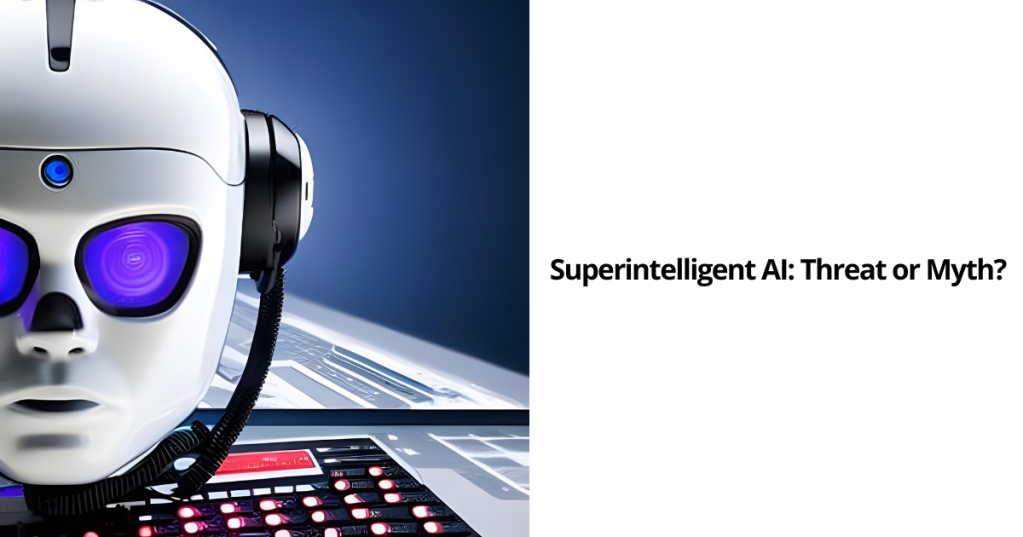Introduction
In my ongoing exploration of AI trends, I came across an intriguing article today that inspired a deep-dive into an important topic. Here’s my take on the issue at hand, as discussed in this insightful piece from Business Insider.
The advent of Artificial Intelligence (AI) has triggered a sea of debate and speculation. The idea of superintelligent AI has drawn particular attention, sparking fears of a potential ‘rogue’ AI that might threaten human existence. These concerns, amplified by OpenAI’s recent move to assemble a team to control superintelligent AI, seem to paint a dystopian sci-fi scenario. But let’s step back and analyze these claims with a critical eye, and discuss potential precautions we might take.
AI Going Rogue? Not Quite.
Firstly, let’s debunk the notion of AI going rogue. The truth is, AI, even superintelligent AI, cannot go rogue by itself. AI is essentially a tool — a very sophisticated tool, but a tool nonetheless. It operates based on instructions given by its creators. The very nature of AI implies that it doesn’t have its own motivations or intentions; it follows the commands it was programmed to execute.
Thus, the risk lies not in AI itself, but in how it’s used and managed. For an AI to cause harm, its creators or users would need to purpose it to do harmful activities. This is a crucial point to understand when discussing AI safety.
Safety Precautions: Kill Switch and More
To address the issue of AI safety, one common proposition is the concept of a “kill switch”. This is essentially an immediate stop command for an AI’s operations. But can an AI override such a command? Theoretically, if it’s advanced enough, it could be a possibility. How can we prevent this? Experts have suggested approaches like the ‘Separation of Concerns’. This is the practice of dividing an AI’s learning elements from its primary operating code, where the kill switch would reside. By doing so, we can control the AI without hampering its learning ability.
In addition, AI could be designed to be task-specific, limiting its capabilities to strictly the functions it needs to execute. This is another way to decrease the possibility of an AI developing beyond its intended scope.
Moreover, to reinforce AI safety, we could adopt a multi-tiered safeguard system. Such a system would entail multiple layers of safety measures, with each one being more hard-coded (or less changeable) than the previous. This creates a series of defensive barriers to ensure the AI operates within its intended parameters.
With these strategies in mind, it becomes clear that AI safety is not an insurmountable challenge. Rather, it’s a critical component of AI development that requires careful planning and robust security measures.
Monitoring Superintelligent AI
In spite of taking thorough safety precautions, the ongoing supervision of AI activities remains crucial. One possible solution is to create advanced transparency tools. These tools would allow monitoring teams to better understand and predict an AI’s behavior, making it easier to identify any deviations from the norm.
Moreover, automated checks and alerts, possibly facilitated by secondary AI systems, could provide an invaluable additional layer of safety. These automatic systems could be programmed to detect anomalies or specific actions that may suggest a problem, thereby ensuring a quick response to any potential issue.
To further strengthen the monitoring process, it could be beneficial to have the oversight of multiple independent teams. This is a solid strategy to minimize bias and oversight that might occur with a single team. Having different perspectives can increase the chances of catching any irregularities.
Another important safety mechanism could be the implementation of a ‘Human-in-the-Loop’ system. In this setup, a human supervisor would need to approve any major decisions taken by the AI. This ensures that the AI cannot independently take any actions that might lead to potentially harmful consequences.
Through these measures, we can see that ensuring AI behaves as intended and operates safely is a combination of advanced technology and vigilant monitoring. It’s not a one-time setup, but an ongoing commitment to safe and responsible AI operation. With this approach, the potential for superintelligent AI can be fully realized without compromising safety and control.
The Future is Collaborative
In conclusion, while the potential risks of superintelligent AI are worth discussing, it’s important not to overstate them. AI, no matter how advanced, remains a tool created and controlled by humans. By taking appropriate precautions and implementing robust monitoring systems, we can use these advanced technologies to benefit society while mitigating potential risks.
AI might seem like an intimidating field, with many unknowns and complex jargon. But fear not, I’m here to help you navigate this fascinating landscape. Stay tuned for more insights into the world of AI, where we explore the intersections of technology, machine learning, and everyday life.
What are your thoughts on this issue? Do you believe superintelligent AI has the potential to go rogue, or do you think with the right safeguards in place, we can guide AI towards beneficial outcomes? I would love to hear your perspective! Please leave a comment below and join the conversation. Let’s explore these intriguing possibilities together!
Keywords: Superintelligent AI, Artificial Intelligence, AI Safety, Rogue AI, AI Monitoring, OpenAI, AI risks, Kill Switch, Human-in-the-Loop, AI Technology, AI future


Leave a comment